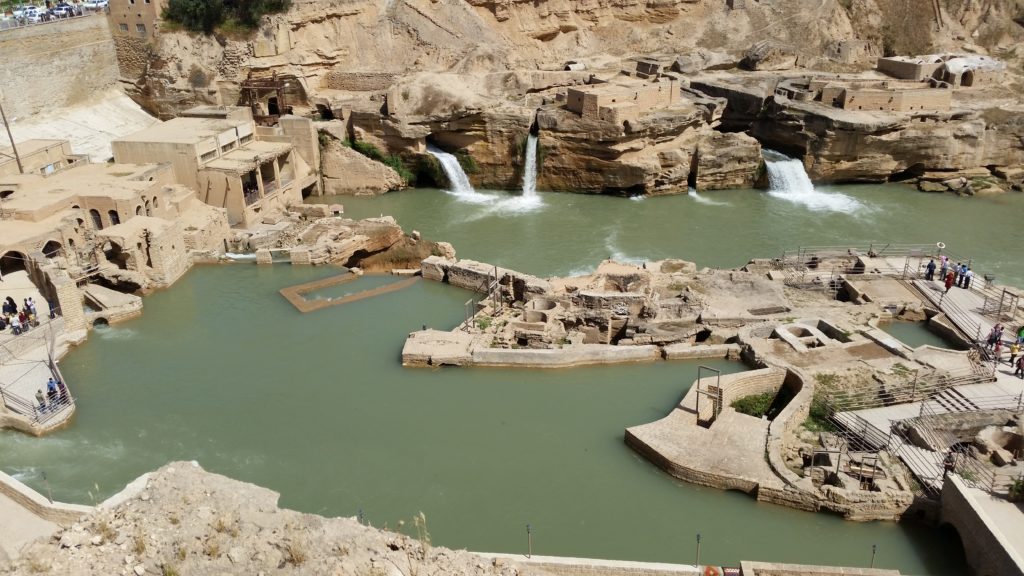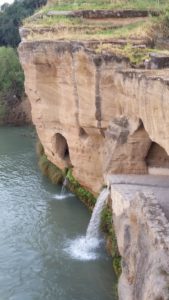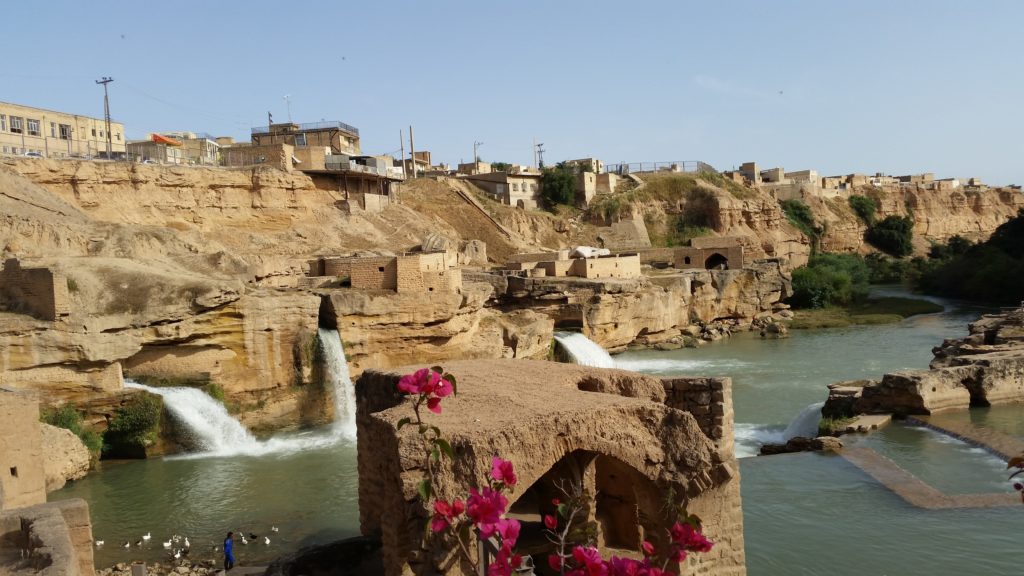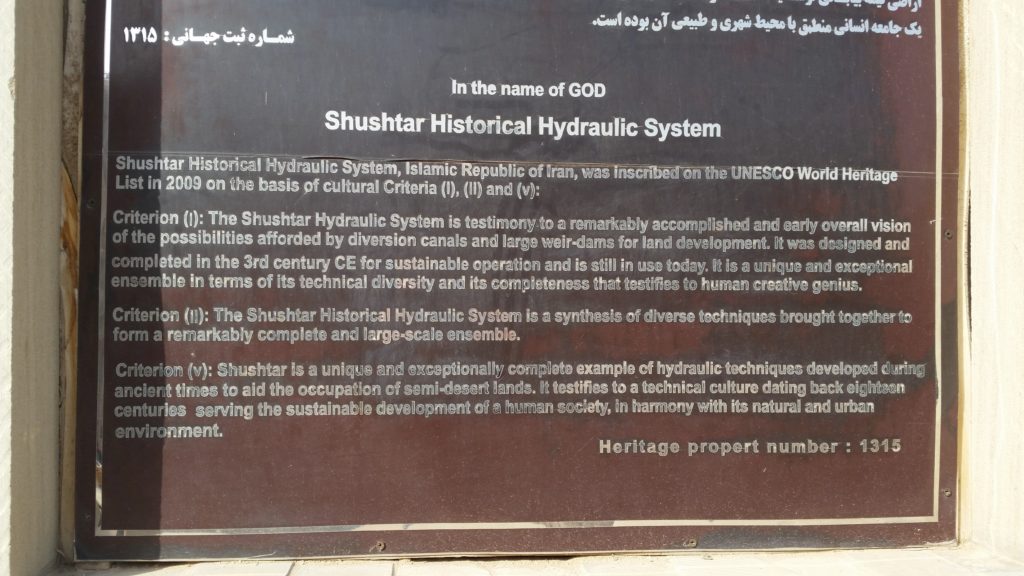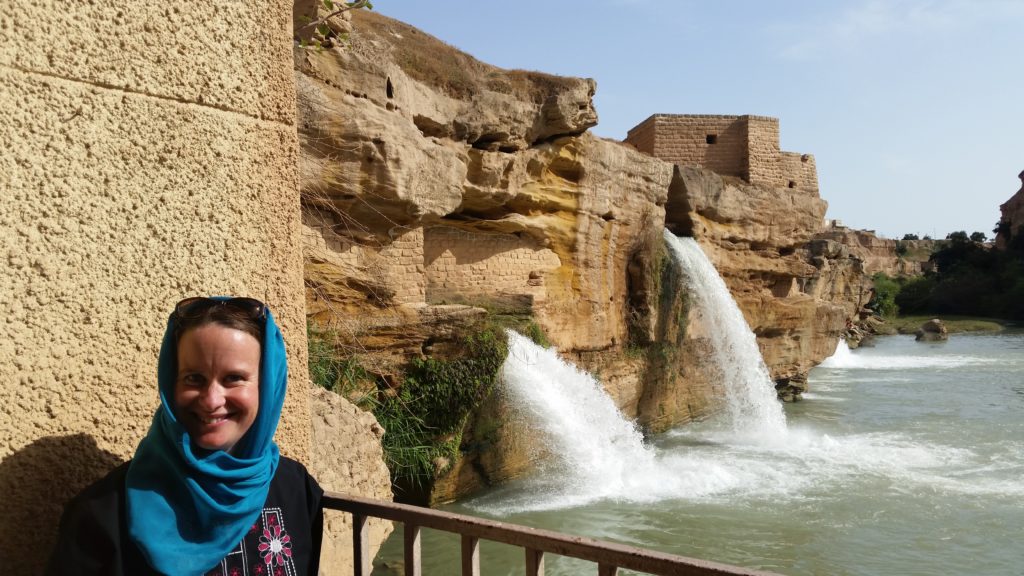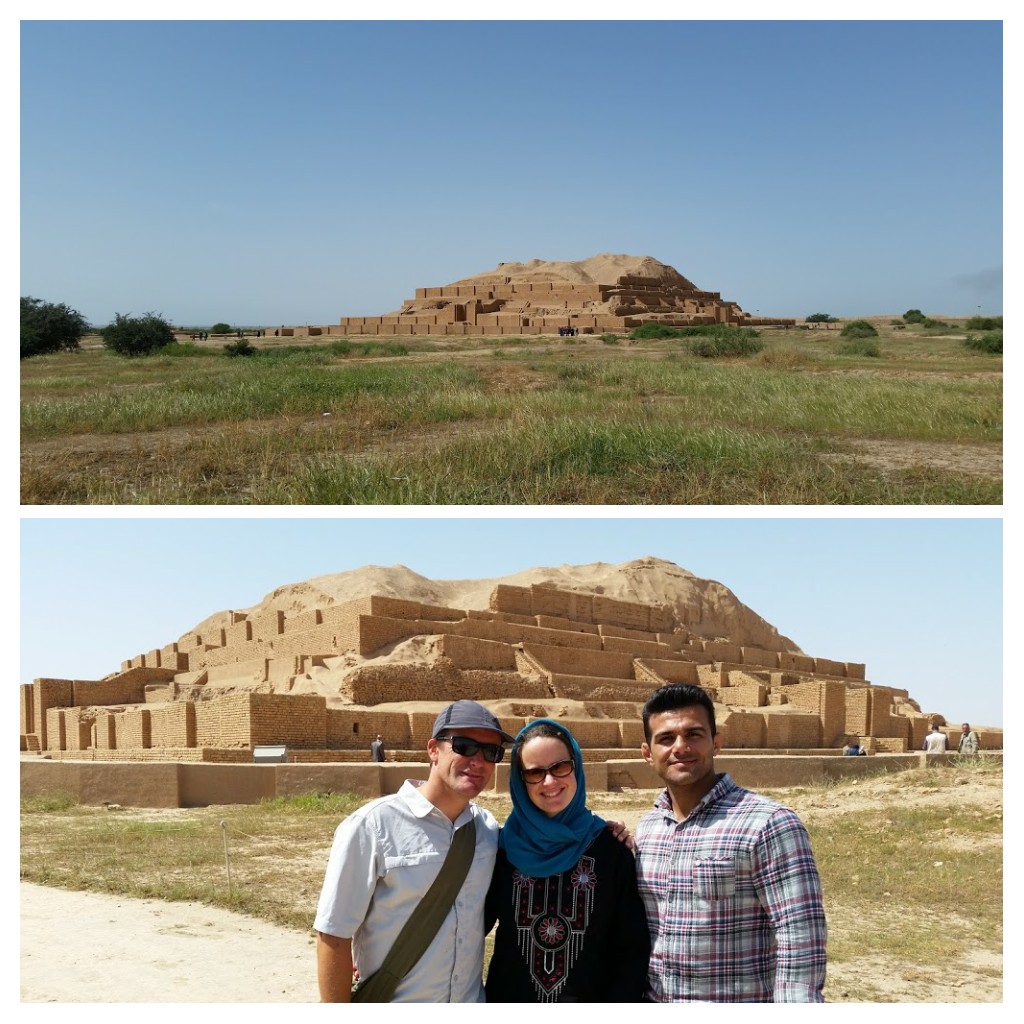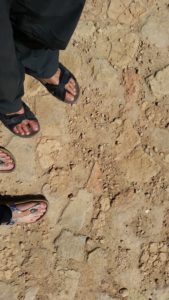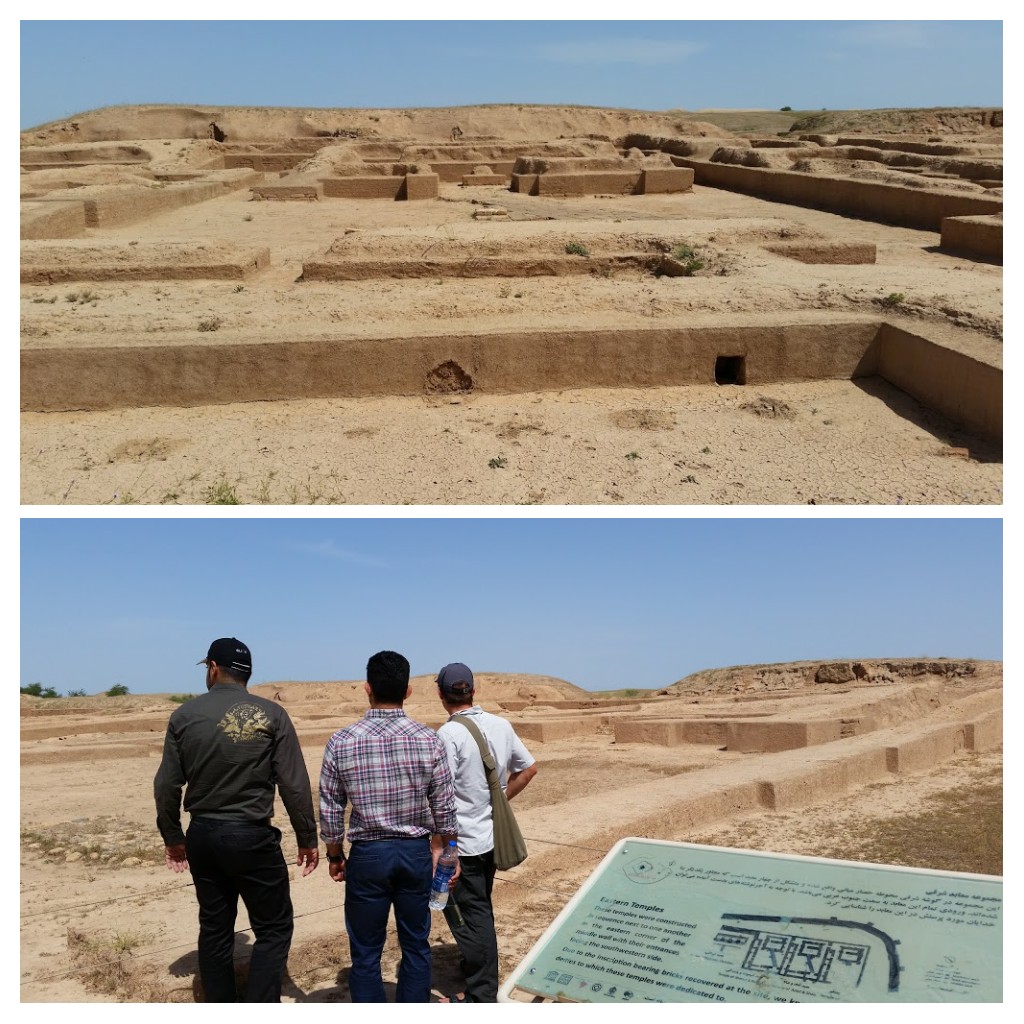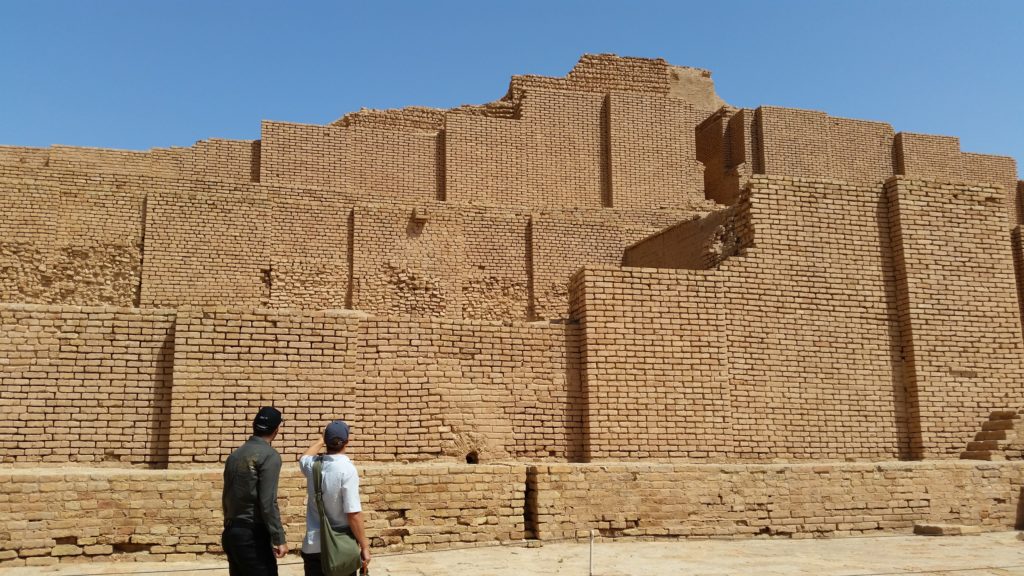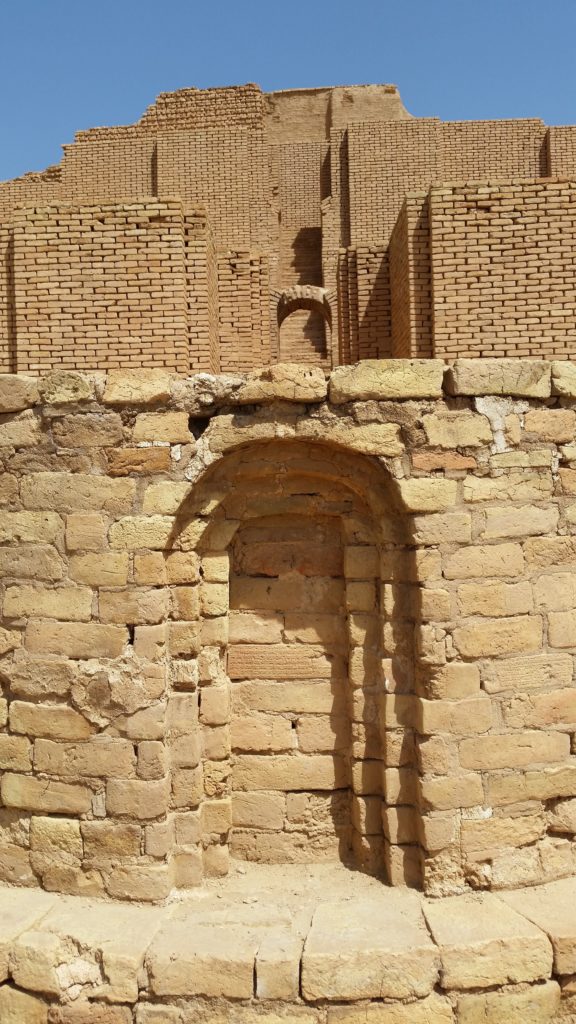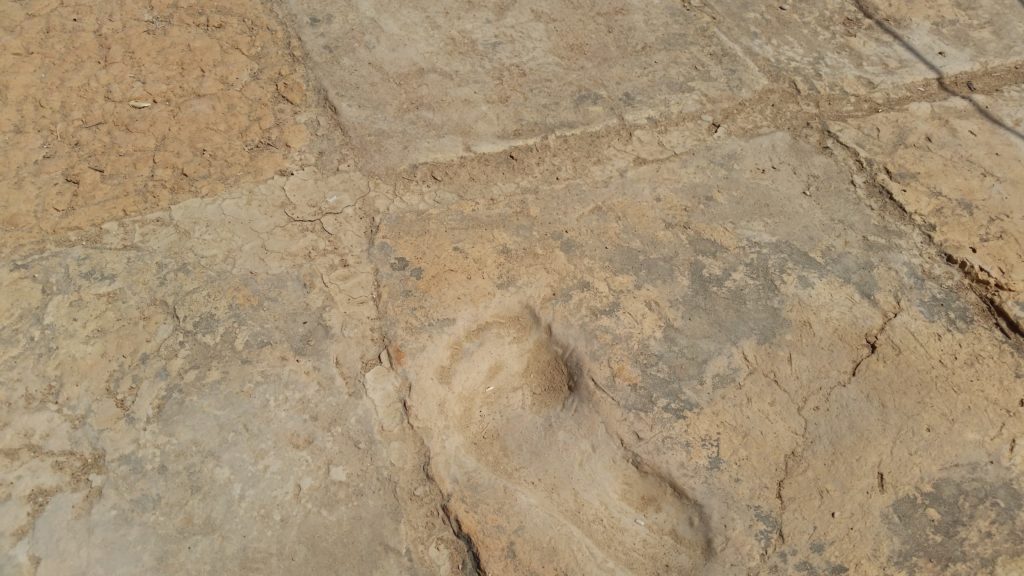Deciding which place is the most beautiful or most interesting in Iran is a little futile… there are of course so many fascinating places. You can fall in love (as I did) with the moonscape-like emptiness of Qeshm, the colours of Hormoz, the history of Yazd, the Jolfa river valley & the 360 degree stunning snowy views from Babak castle (OMG -incredble place- blog post still to come!), the historical village of Kharanaq, the mosques of Esfahan or the bedazling shrine in Shiraz. Each has their own beauty, their own story.
Having said that, if ever there was a competition for the most interesting and beautiful spot in Iran and I was the judge, the Shushtar Waterfalls & Watermills area would be a stong contender for the title. Funny enough though, not that many travellers seem to know about it. Even our host who lived only an hour away in Dezful (also worth a visit) didn’t know why we wanted to go there and had never been himself. He thought Shush was worth visiting but we had to convince him that Shushtar too deserved a look. In fact for us Shushtar was the main reason to come to this part of Iran! I had seen it on a traveller’s documentary last year and knew that with my husband’s love of dams and waterways it was a must see for us in Iran. We were not disappointed and our Iranian friends who took us there were also surprised and impressed with how cool it was!
So here’s a little info for those of you who haven’t had this little gem of a place come to your attention. The Shushtar Hydraulic System is composed of lots of bridges, dams and all kinds of features that unfortunately we didn’t get to explore. We’ll have to come back to see it all! The system has diverse engineering structures and served multiple purposes – a defensive system, river transport, urban water supply, irrigation and for mills. In its current form it dates from around 300 CE, the Sassanid era, however it is believed work on it started in the 5th century BCE.
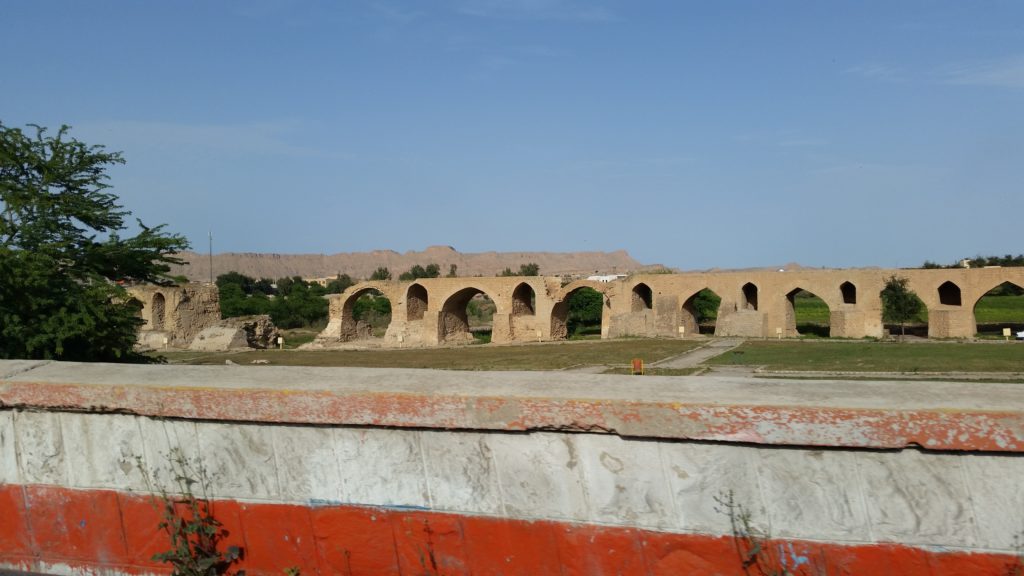
Band-e Kaisar – Caesar’s dam: First bridge to be combined with a dam. Built with the help of 70,000 captured Roman soliders in the 3rd century, now only parts of the arched super structure remain.
The most picturesque area and the part we saw was to the south of the bridge-dam on the Gargar. This bridge serves the important function of connecting East and West Shushtar and is very easy to find. The Gargar canal is an artificial branch of the Karun River and is one of the largest man-made water courses in Iran, flowing some 100km before rejoining the Karun. The Gargar bridge- dam is 83m long, 12 m wide and 6m high.
On the south side of the dam is a 5 hectare area with canals, tunnels, waterfalls and water mills that used the power of the water for industrial purposes and water for irrigation. There were about 50 mills, grinding all kinds of grain, shelling rice, producing flour and sesame oil etc, but not all remain. Two types of watermills were used here, tanoureyi (made from spokes or paddles) and the shibi (wheel-made mills). The former proved to be more economic so the shibi watermills declined in usage. There are good informative diagrams at the site and you can see how a mill works by watching one of them in action. There are a complex system of pathways that direct water to various mills with gates to control the flow of water and hence the speed of the mills – brilliant really!
The place was Unesco listed in 2009 and this sign has a great explanation of why it deserves this title:
On the same day we visited Shushtar we also saw Choqa Zanbil– another Unesco World Heritage site! This one wins the prize for having the oldest structure in Iran. Choqa Zanbil was founded by the Elamite king Untash-Napirisha (1275- 1240 BCE) to be the religious centre of ancient Elam. There is evidence of temples and an amazingly well-preserved ziggurat from 1250 BCE. That is not a typo folks- this place was well over 3000 years old!
Coming from a country that has had indigenous people living in it for about 1000 years but wasn’t even known to exist to the rest of the world 400 years ago, whose oldest building is from less than 200 years ago… something that is this old just blows me away!!
As I walked around I looked at the ground and I thought to myself, wow, three thousand years ago I wonder what kind of people walked here, what they thought about, what they wore, what language they spoke, what they talked about with their friends, what they ate. We know that they worshipped their gods here, among them Inshushinak and Napirisha and built really cool structures that have lasted the test of time… 3000 years… insane!
There is a little evidence of temples, palaces, living quarters, tombs and qanat water channels but by far the attraction is the well preserved central ziggurat. A ziggurat is a huge structure, in the form of a terraced step pyramid and this is the largest one outside of Mesopotamia and the best preserved of its type. Early inhabitants of this area of Iran considered mountains to have great religious significance. Where there were no mountains, they made their own… hence the ziggurat at Choqa Zanbil.
The ziggurat was built in the centre of the town Dur Untash, founded by King Untash Gal in the mid 13th century BCE. At that time the area was fertile and forested, these days it is dry and dusty. Some research indicates that the city wasn’t finished as not many houses were built here, it was mostly temples. There were also thousands of unused bricks found at the site which suggest the city wasn’t finished. Supposedly the place flourished in the 12th century BCE as a spiritual centre with many temples and priests but after that I’m not sure what happened.
In 646 BCE the town was sacked by the Assyrian king Ashurbanipal and then abandoned. Sands eventually covered the site which was then ‘lost’ for around 2500 years! Locals called it a sand hill without knowing what was inside it. It was accidentally discovered in 1935 by the forerunner of BP (the Anglo-Iranian Oil Company) during an aerial survey. Makes you wonder what else might be hiding out there!
The Ziggurat originally had five storeys, each level built as a tower from the foundation level, not on top of another. At the top there was a temple where only the highest elite of Elamite society could access. The ziggurat was originally 53m in height but today stands only 24.75m high. Two levels exist today and remains of a third also, but the top two levels have disappeared. An internal vaulted staircase (invisible from the outside) led archaeologists in the 1950s all the way up to the third storey. The brick structure is amazingly well preserved it looks almost new! It isn’t of course and if you can get close enough you can see the cuneiform inscriptions on the bricks at about eye level, the world’s first alphabet.
A footprint was preserved in the mudbricks used at the base of Choqa Zanbil- a very real reminder of the people involved in the building of this place. Being at least 3000 years old this footprint is perhaps the world’s oldest (does anyone know of an older one?).
So – if you are reading this and planning a trip to Iran- consider making it out west, toward Dezful, Shushtar and Choqa Zanbil, a very unique part of Iran and well worth a visit.
